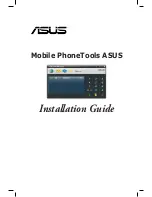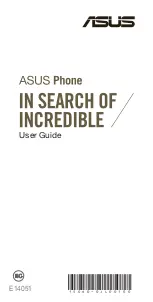
23
and used in accordance with the instructions, may cause harmful interference to radio communications. However,
there is no guarantee that interference will not occur in a particular installation. If this equipment does cause
harmful interference to radio or television reception, which can be determined by turning the equipment off and
on, the user is encouraged to try to correct the interference by one or more of the following measures:
• Reorient or relocate the receiving antenna.
• Increase the separation between the equipment and receiver.
• Connect the equipment into an outlet on a circuit different from that to which the receiver is connected.
• Consult the dealer or an experienced radio/TV technician for help.
Hearing Aid Compatibility (HAC)
The FCC has established requirements for digital wireless mobile devices to be compatible with hearing aids and
other assistive hearing devices.
When wireless devices are used near hearing devices (such as hearing aids and cochlear implants), users may
detect a buzzing, humming, or whining noise. Some hearing devices are more immune than others to this
interference, and wireless devices also vary in the amount of interference that they generate.
The wireless telephone industry has developed ratings to assist hearing device users in finding wireless devices
that may be compatible with their hearing devices. Not all wireless devices have been rated. Wireless devices that
are rated will have the rating displayed on the box together with other relevant approval markings.
The ratings are not guarantees. Results will vary depending on the user’s hearing device and hearing loss. If your
hearing device is vulnerable to interference, you may not be able to use a rated wireless device successfully.
Consulting with your hearing health professional and testing the wireless device with your hearing device is the
best way to evaluate it for your personal needs.
This smartphone has been tested and rated for use with hearing aids for some of the wireless
technologies that the smartphone uses. However, other wireless technologies may be used in this
smartphone that have not been tested for use with hearing aids. It is important to try the different
features of your smartphone thoroughly and in different locations to determine if you hear any
interfering noise when using this smartphone with your hearing aid or cochlear implant. Consult
your wireless service provider about its return and exchange policies, and for information about
hearing aid compatibility.
Your device includes a radio transmitter and receiver. It is designed and manufactured not
to exceed the exposure limits for Radio Frequency (RF) set by the Federal Communications
Commission (FCC). The RF exposure limits set by the FCC for wireless mobile devices utilize a
unit of measurement referred to as Specific Absorption Rate (SAR), which is a measure of the
amount of RF energy absorbed by the body when using a mobile device. The FCC requires mobile
device manufacturers to ensure that their mobile devices comply with these objective limits for
safe exposure. The FCC SAR limit incorporates a substantial margin of safety to give additional
protection to the public and to account for any variations in measurements. The FCC limit for public
exposure from cellular telephones is a SAR level of 16 watts per kilogram (1.6 W/kg).
This device complies with FCC radiation exposure limits set forth for an uncontrolled environment. To ensure
compliance with the RF exposure guidelines, the device must be used at least 15mm from your body.
Summary of Contents for REVVL V+ 5G
Page 1: ...User Manual English...






































